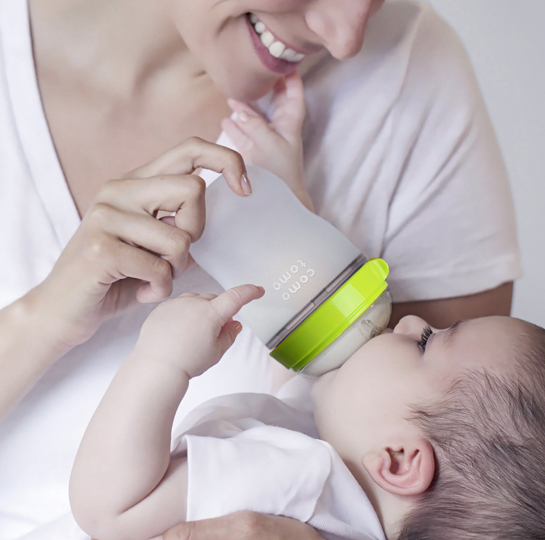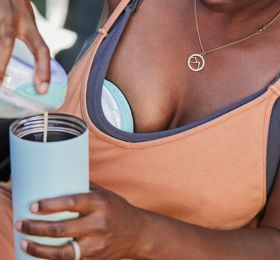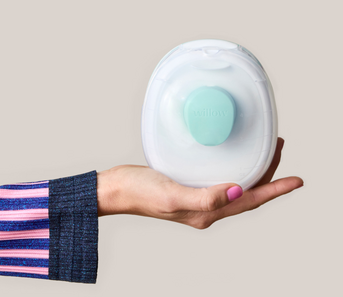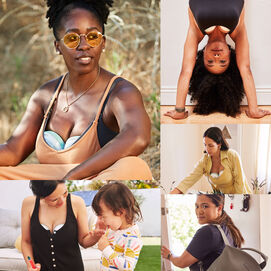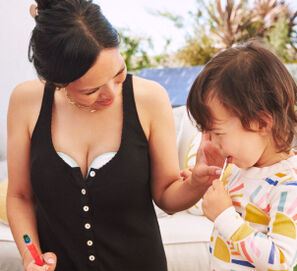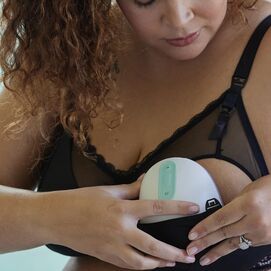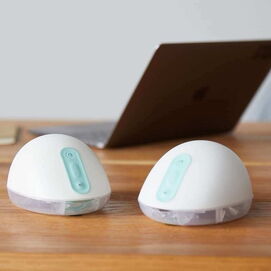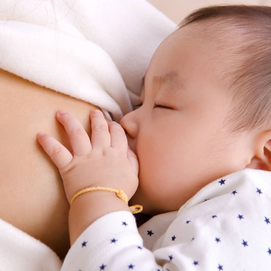Sending your little babe off to daycare for the first time can be quite an emotional experience and this is especially true when you’re breastfeeding.
Rest assured, a bit of prep work can help you feel much more comfortable. Here, we’ll share our tips and tricks for storing breast milk for daycare, transporting your bottles safely and more.
Storing Breast Milk for Daycare: Before School
So, you’ve got your cup of coffee in hand and your favorite 90s tunes playing in the background, getting ready for the day. Now’s also the time to prep your baby’s breast milk.
Make sure you have plenty of storage containers or milk bags, as well as an insulated bag and some freezer packs. With supplies ready to go, it’s time to pack up.
Your Daycare’s System
Real quick, let’s take a step back. Do you know your daycare’s expectations when it comes to breast milk? For example, your daycare may require you to bring in bottles already prepped. Or, they may be fine with bags of milk and bottles to pour it into.
Call your daycare or caregiver and ask about their policies or preferences. It’s best to do this a couple of weeks in advance, so you know just what to prep.
Preparing & Storing Breast Milk
The way you prep your breast milk will depend on the way you pump and what’s easiest for you. It will also depend on how much milk your baby will need that day.
If you need to thaw milk that’s been frozen, do so the night before. You can also pump some fresh milk and place it in the fridge until you’re ready to head out. We find it easiest to prep your bottles with the right amount of milk for easy grab-and-go in the morning!
How Much Milk Do I Need to Prep?
Good question! You can calculate how much breast milk your baby needs by answering these questions:
-
How much milk is your baby currently drinking and how often?
-
How long will your baby be at daycare or with the caregiver?
Say your baby drinks 3 ounces of milk at every feeding and eats every 2-3 hours. If you’ll be gone for an eight-hour workday, sending 10 to 12 ounces of milk is a great starting point.
Hey, you know your baby best—send the amount you feel comfortable with. Any extra milk can be used after pick-up.
Labeling Your Breast Milk
To avoid milk mix-ups (more on than later), label your baby’s bottles with their name. It’s also a great idea to put the date on the label. You can purchase bottle labels from various places online (and some are absolutely adorable!). Or, use a piece of masking tape or painter’s tape that’s easy to remove.
Transporting Your Bottles
Traveling with breast milk is easy with the right tools. Find an insulated bag that you might use for your lunch or purchase a bag made specifically for breast milk bottles. You’ll also want an ice pack you can throw in your freezer to keep your milk cool.
Using a bag works great whether you’re using bottles or milk bags. Just make sure there are no leaks and don’t forget to tighten each lid. You can also use a small cooler if you’d like, which can also be used to store the breast milk you pump while at work or away.
Our Favorite Bottles
Our Favorite Bottles
You want only the best bottle for your pumped milk. For breastfed babies, we love Comotomo bottles.
During School
You’ve made it through prep like a champ! Now it’s time to drop that sweet babe off and let your caregiver do the rest.
Preparing Your Daycare to Use Pumped Breast Milk
Knowing you, you’ve probably already checked to make sure your daycare or caregiver understands how to use pumped breast milk. But, if it’s slipped your mind (busy parent brain), here’s a checklist of questions to ask:
-
How do you warm up breast milk?
-
How do you store breast milk? Do you store breast milk in a fridge?
-
Is each daycare employee trained on how to use pumped breast milk?
-
Do you check breast milk labels each time to ensure the right milk is given to the right baby?
If you feel confident in your caregiver or daycare, awesome! That’s one less thing to worry about as you return to work or travel.
Using & Storing Expressed Breast Milk at Daycare
It’s a great idea to provide your daycare with any instructions you have for the use of your breast milk. For example, share your baby’s feeding schedule with your caregiver to ensure your baby stays on track.
If your baby uses different bottles to eat than the storage bottles, pack them and make that note. If there are any other unique things about your baby such as positions they enjoy during feeding, let your caregiver know those too.
You might be wondering what happens if your baby is going through a growth spurt and requires more milk in a day than you brought. No worries. Ask your daycare to allow you to bring a couple of milk bags to store in the freezer to use if needed.
Portable Breastmilk Milk Cooler
Portable Breastmilk Milk Cooler
Store up to 16 oz of milk at a safe temperature for up to 24 hours with our new patent-pending Portable Breastmilk Cooler. It's the breastmilk chiller you'll bring everywhere.
After School
Ah, sweet pick-up time. You’ve made it! Now it’s time for you and your little one to go home and enjoy each other’s company while preparing for another day.
Cleaning & Disinfecting Daycare Bottles
Germs can find their way into your daycare bottles, so it’s important to take care in cleaning them each day. The CDC shares some great steps on how to clean your bottles thoroughly:
- Wash your hands.
- Take the bottle apart, including the nipple, rings and caps.
- Place all of the parts in a clean bowl that isn’t the sink. Germs like to hang out there.
- Add hot water and soap.
- Scrub the items with a clean brush and rinse twice.
- Allow the bottle parts to air dry.
If you feel you need some extra protection, you can also sanitize your bottles by boiling them for 5 minutes.
Preparing for Tomorrow
To prepare for the next day at daycare, allow your bottles to dry and cool. When ready, fill them up with the correct amount of milk and place them in the fridge. Don’t forget your labels!
Breast Milk Mix-Up at Daycare? Here’s What to Do Next!
Hearing that your baby has accidentally been given someone else’s breast milk can be terrifying. But, take a deep breath. The CDC says that few illnesses can be transmitted through breast milk due to its health properties. Yet, the CDC outlines some key steps to take to ensure your baby is safe:
Talk to the mother whose breast milk was given to your baby: Your daycare or caregiver may be able to do this on your behalf as well. Ask the mother how she handles her breast milk before bringing it to daycare. You should also ask if she’s comfortable giving you info about her medication use, any illnesses or any diagnoses of infectious disease.
Speak to your doctor: Again, the risk to your baby is small. Yet, it’s important to speak to your baby’s doctor about the exposure. Your doctor will be able to guide you through the next steps should there be any required.
You should also discuss how your caregiver or daycare can prevent milk mix-ups in the future. This may include improving milk storage, milk labeling or enhanced care.


